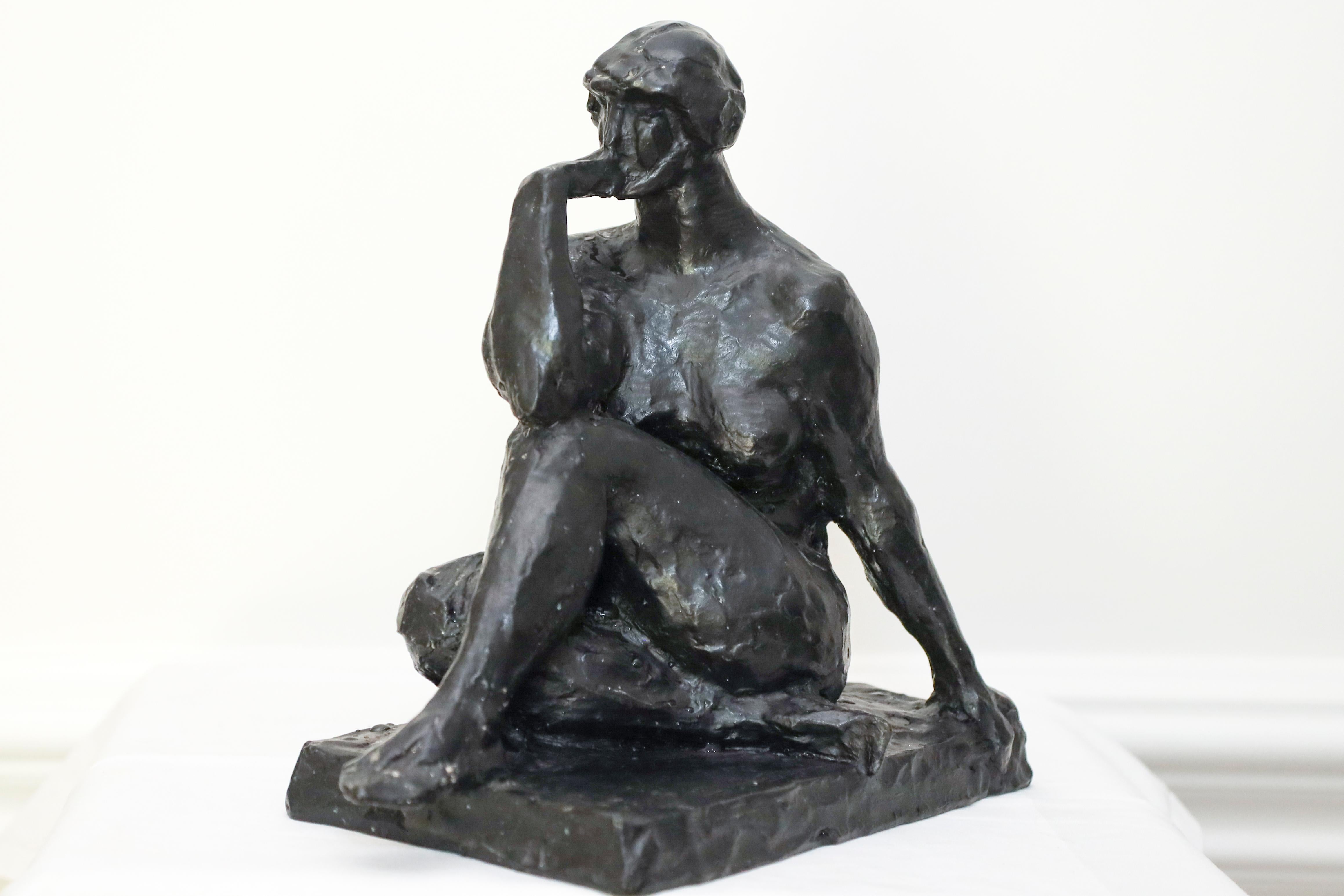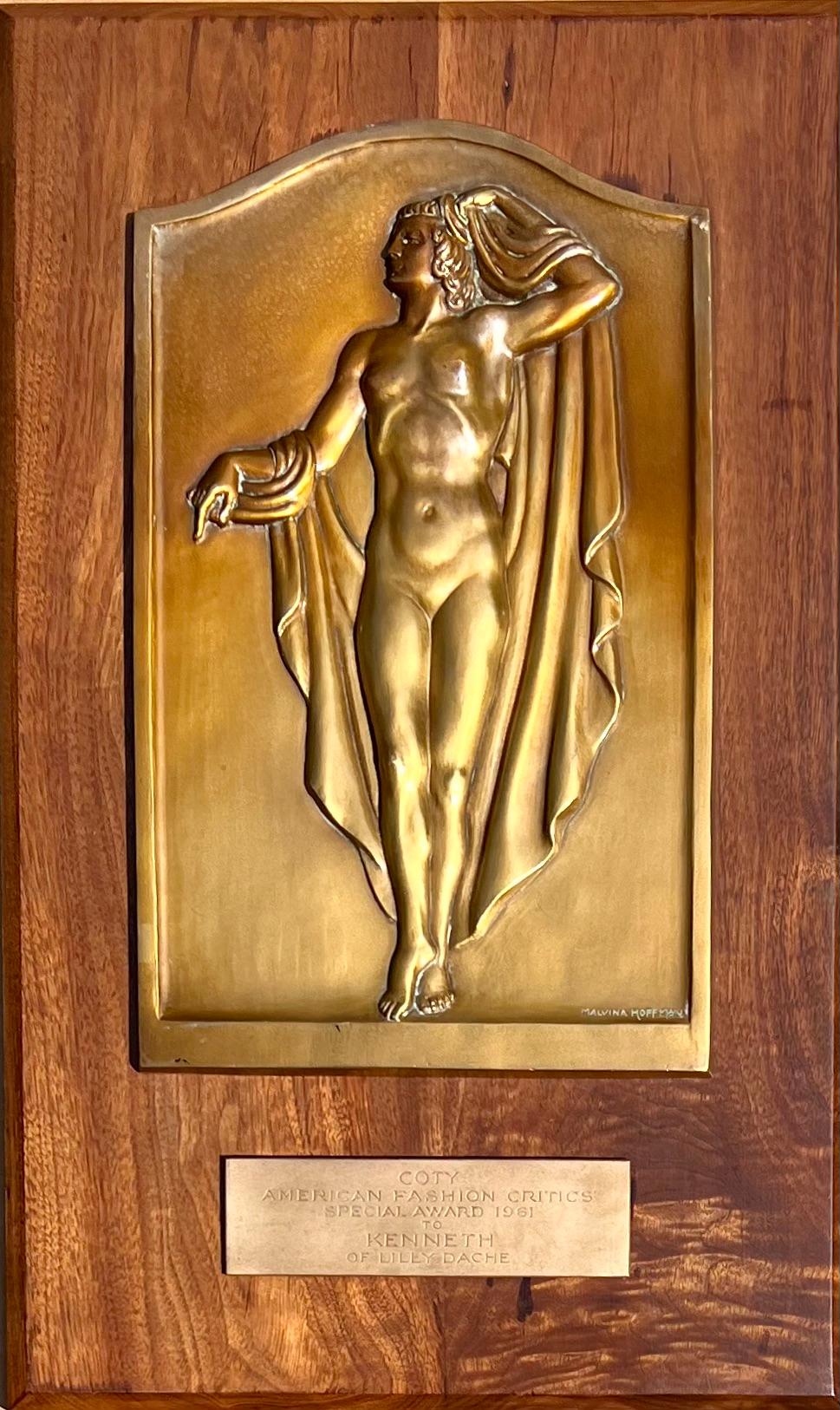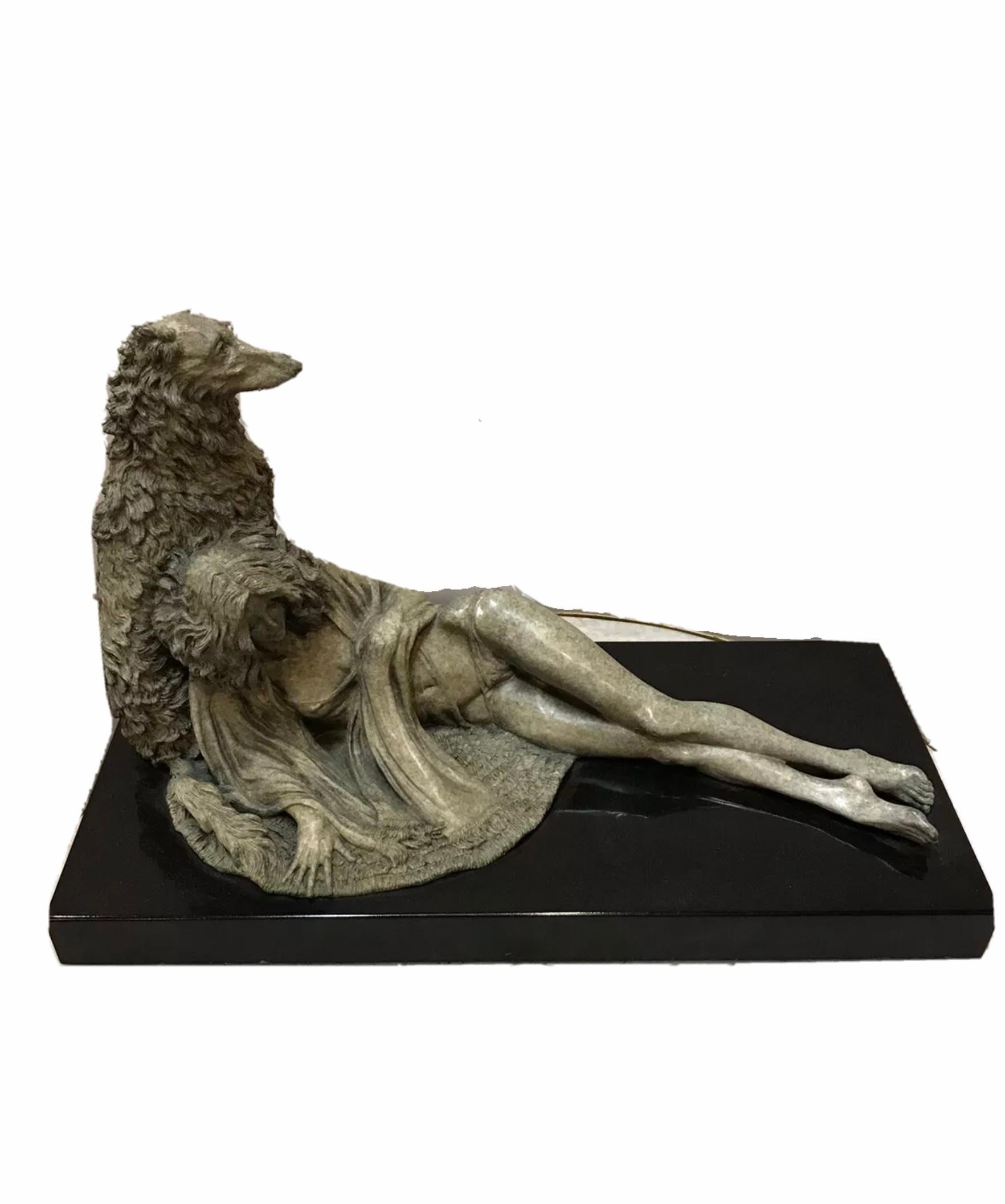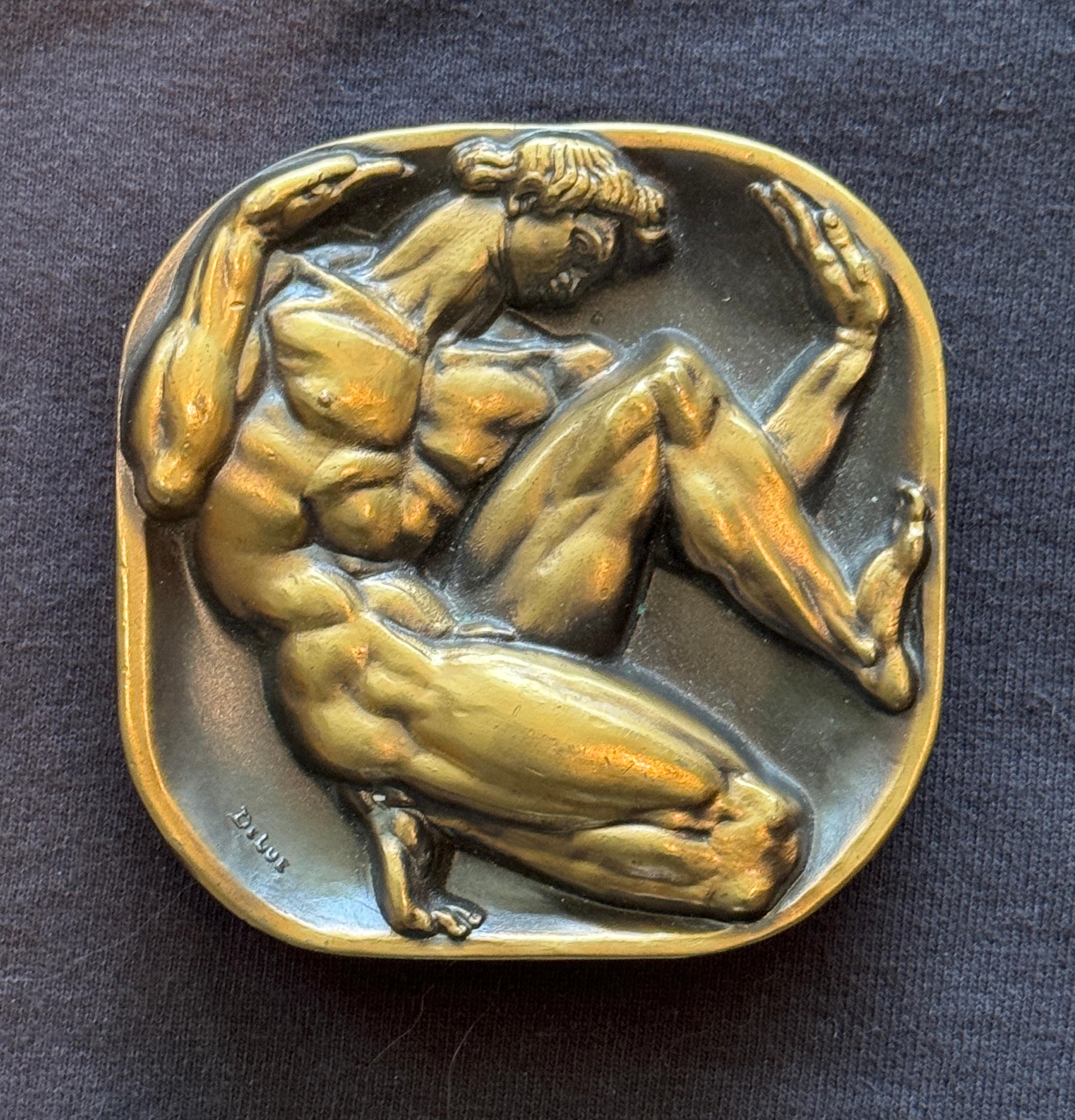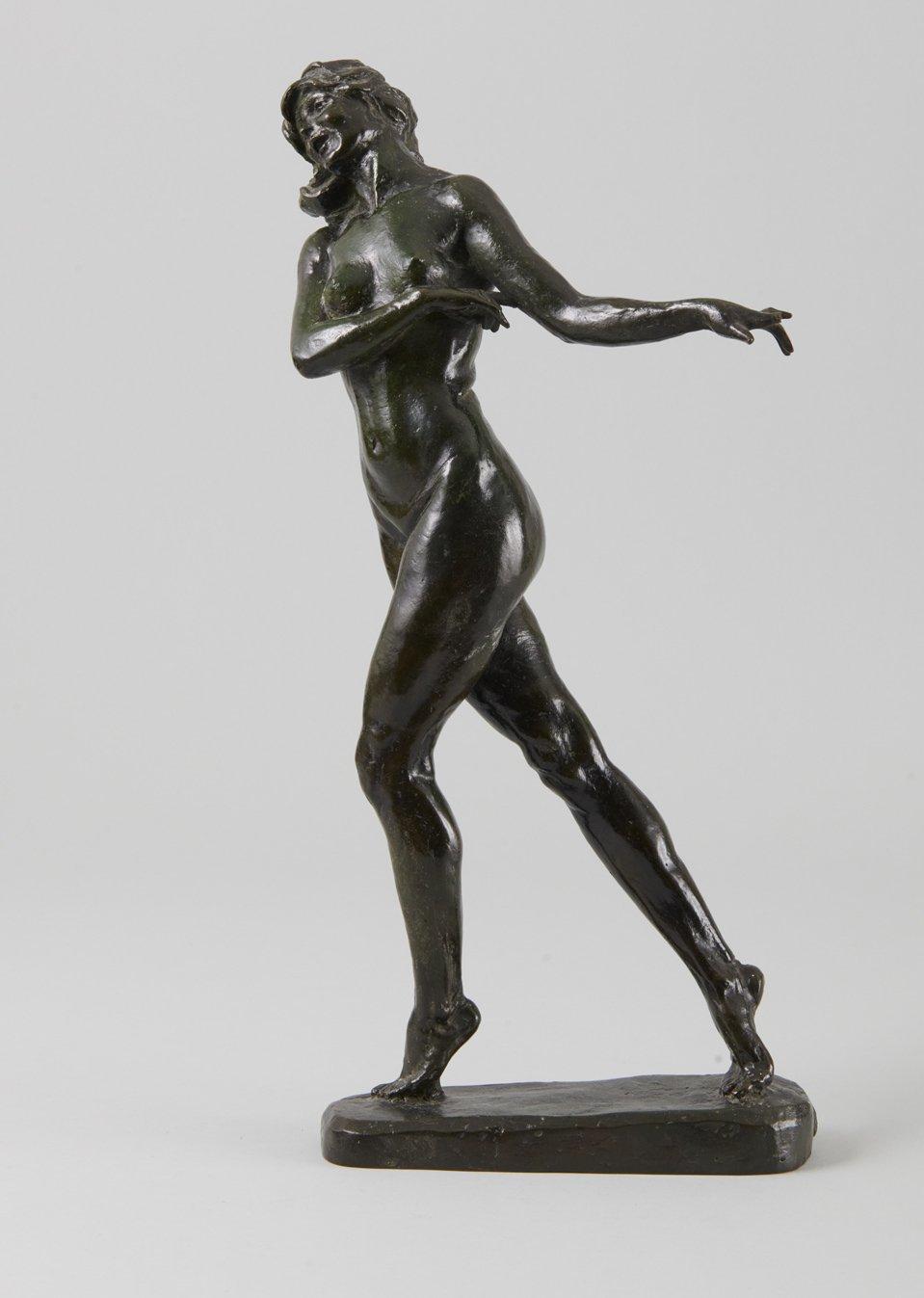Items Similar to To The Ultimate Do We Pursue The Ideal
Want more images or videos?
Request additional images or videos from the seller
1 of 4
Paul ManshipTo The Ultimate Do We Pursue The Ideal1915
1915
About the Item
This is an iteration of Paul Manship's medal that features the artist Barry Faulkner on the obverse, and the inscription of that version is marked "Barry Faulkner Painter MXMXV (1915)"
This bronze medallion produced and altered for the Rockport Art Association For Distinguished Service, and this particular example was awarded to Harriet Wengenroth (wife of Stow).
American artist Barry Faulkner (1881-1966) is known for his murals in the National Archives building in Washington, D.C., and in state capitols across the United States. Paul Manship knew Faulkner when they were both students at the American Academy in Rome from 1909 to 1912. The inscription on the reverse, “To the Ultimate Do We Pursue the Ideal,” reflects the classical training that Manship and Faulkner shared.
- Creator:Paul Manship (1885 - 1966, American)
- Creation Year:1915
- Dimensions:Height: 0.375 in (9.53 mm)Diameter: 3.375 in (8.58 cm)
- Medium:
- Movement & Style:
- Period:
- Condition:Original state of preservation with lovely patina The Smithsonian American Art Museum holds an example of this medal with Barry Faulkner's portrait, and it can be easily found by searching the internet.
- Gallery Location:Concord, MA
- Reference Number:
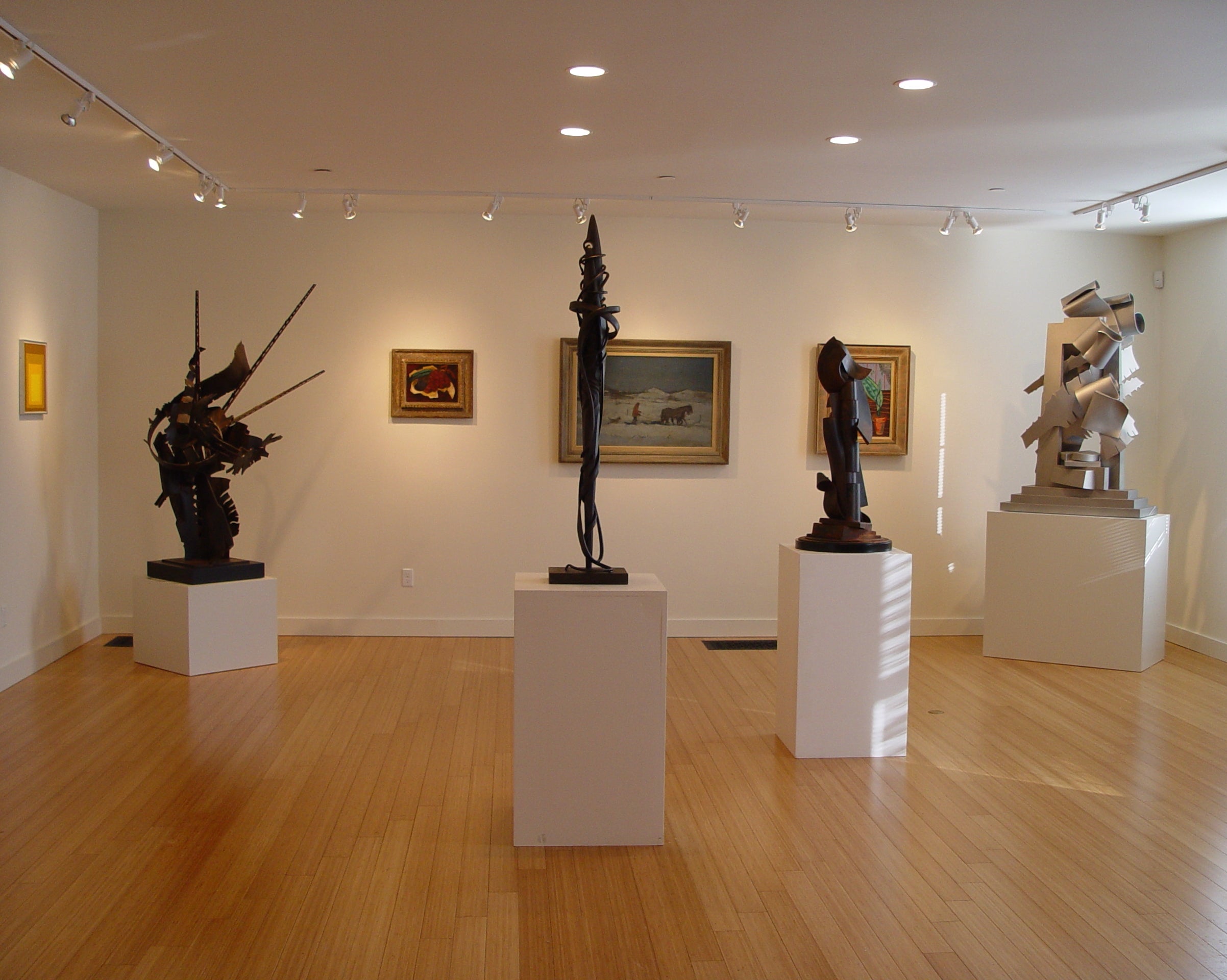
About the Seller
4.4
Vetted Seller
These experienced sellers undergo a comprehensive evaluation by our team of in-house experts.
Established in 1993
1stDibs seller since 2014
50 sales on 1stDibs
Typical response time: 4 hours
- ShippingRetrieving quote...Ships From: Concord, MA
- Return PolicyThis item cannot be returned.
More From This SellerView All
- Bursting the BoundsBy Donald De LueLocated in Concord, MAThis De Lue design was chosen as the 111th issue of the prestigious Society of Medalists series. Both obverse and reverse bear a muscular nude constrained by the rectangular medal's ...Category
1980s American Modern Nude Sculptures
MaterialsBronze
- DandelionBy Naomi SavageLocated in Concord, MANAOMI SAVAGE (1927-2005) Dandelion, c.1960 Photo-engraving with painted additions on copper 4 3/8 x 3 ½ inches (plate) Inscribed on the reverse: Naomi Savage / (BK) / 1960? Naomi Savage was born in Jersey City, New Jersey in 1927. From a very early age, Naomi was interested in the arts. Her mother encouraged her to pursue music, and as the niece of famous Dada and Surrealist painter, sculptor, and photographer, Man Ray, she was able to pursue her interests with much support from her family. During high school, Naomi attended a class taught by Bernice Abbott, Man Ray's assistant in the 1920’s, at the New School for Social Research. She later attended Bennington College, where she studied music and the arts. Shortly after college, she traveled to California to study and apprentice with her uncle, Man Ray. Ray was a great inspiration to the young Naomi; he encouraged her to let her imagination create her art. Savage said later in her life that her strongest inheritance enriching her artistic career came from her uncle, Man Ray. "I never forgot his insightfulness," she said. "With him you could try anything - there was nothing you were told not to do, except spill the chemicals. With Man Ray, you were free to do what your imagination conjured and that kind of encouragement was wonderful". In 1950, Naomi married painter, sculptor, and architect, David Savage. Shortly after, the couple moved to Lambertville, New Jersey, residing there for three years before moving to Princeton, New Jersey. She had her first exhibition in 1952 at the Museum of Modern Art in New York City, and exhibited there again in 1960, 1966, and 1968. Her work can now be seen in the permanent collections of the Museum of Modern Art in New York, the Museum of Fine Arts in Boston, the International Center of Photography in New York, the Art Institute of Chicago, the Fogg Museum at Harvard University, and the Noyes Museum in Oceanville, New Jersey. Savage pioneered the use of photographic engravings for which she is best known. With a photographic engraving, the actual metal photographic plate itself is the art. It is described as a kind of topographic photograph with forms in three dimensions and with a variety of metallic surfaces and tones. Some of her most famous photographic engravings involve a series of portraits of her sister, which she manipulated in countless ways over many years. But her most famous photographic engraving (perhaps her most famous work of all) is a fifty-foot long mural she did on the side of the Lyndon B. Johnson Library and Museum in Austin, Texas. Her approach to photography represents an involvement with process as medium, and an interest in art as image manipulation, a pursuit shared by contemporaries like Robert Heinecken, Betty Hahn, and Bea Nettles...Category
1950s American Modern Mixed Media
MaterialsCopper
- Classic FormBy Naomi SavageLocated in Concord, MANAOMI SAVAGE (1927-2005) Classic Form, c. 1970’s Line-cut photo-engraving on zinc-plated copper 9 ½ x 7 ½ inches (plate) Titled and inscribed on artists label verso: “Classic Form” / Collection- Eve Kraft / N.F.S. / Insurance value / $500.00 Artists label on the reverse reads: NAOMI SAVAGE / DRAKES CORNER ROAD / PRINCETON, NEW JERSEYT / PHOTOGRAPH BY / NAOMI SAVAGE Original Kulicke Lucite frame PROVENANCE Ex. Collection Eve Kraft N.F.S. Private collection, Princeton, New Jersey Naomi Savage was born in Jersey City, New Jersey in 1927. From a very early age, Naomi was interested in the arts. Her mother encouraged her to pursue music, and as the niece of famous Dada and Surrealist painter, sculptor, and photographer, Man Ray, she was able to pursue her interests with much support from her family. During high school, Naomi attended a class taught by Bernice Abbott, Man Ray's assistant in the 1920’s, at the New School for Social Research. She later attended Bennington College, where she studied music and the arts. Shortly after college, she traveled to California to study and apprentice with her uncle, Man Ray. Ray was a great inspiration to the young Naomi; he encouraged her to let her imagination create her art. Savage said later in her life that her strongest inheritance enriching her artistic career came from her uncle, Man Ray. "I never forgot his insightfulness," she said. "With him you could try anything - there was nothing you were told not to do, except spill the chemicals. With Man Ray, you were free to do what your imagination conjured and that kind of encouragement was wonderful". In 1950, Naomi married painter, sculptor, and architect, David Savage. Shortly after, the couple moved to Lambertville, New Jersey, residing there for three years before moving to Princeton, New Jersey. She had her first exhibition in 1952 at the Museum of Modern Art in New York City, and exhibited there again in 1960, 1966, and 1968. Her work can now be seen in the permanent collections of the Museum of Modern Art in New York, the Museum of Fine Arts in Boston, the International Center of Photography in New York, the Art Institute of Chicago, the Fogg Museum at Harvard University, and the Noyes Museum in Oceanville, New Jersey. Savage pioneered the use of photographic engravings for which she is best known. With a photographic engraving, the actual metal photographic plate itself is the art. It is described as a kind of topographic photograph with forms in three dimensions and with a variety of metallic surfaces and tones. Some of her most famous photographic engravings involve a series of portraits of her sister, which she manipulated in countless ways over many years. But her most famous photographic engraving (perhaps her most famous work of all) is a fifty-foot long mural she did on the side of the Lyndon B. Johnson Library and Museum in Austin, Texas. Her approach to photography represents an involvement with process as medium, and an interest in art as image manipulation, a pursuit shared by contemporaries like Robert Heinecken, Betty Hahn, and Bea Nettles...Category
1970s American Modern Figurative Photography
MaterialsCopper
- Seeking a FutureBy Philip EvergoodLocated in Concord, MAPHILIP EVERGOOD (1901-1973) Seeking a Future, 1952 Oil on canvas 24 x 18 inches Signed and dated at lower left: Philip Evergood / 52 Heydenryk frame PROVENANCE Alfredo Valent...Category
1950s American Modern Figurative Paintings
MaterialsCanvas, Oil
- The Red Shawl,By Arthur Beecher CarlesLocated in Concord, MAARTHUR BEECHER CARLES (1882-1952) The Red Shawl, n.d. Oil on canvas 21 ¼ x 18 ¼ inches Unsigned Framed Arthur B. Carles was born in Pennsylvania, and stu...Category
Early 20th Century American Modern Nude Paintings
MaterialsCanvas, Oil
- Secretary Hull,By William CottonLocated in Concord, MAWILLIAM COTTON (1880-1958) Secretary Hull, 1934 Pastel on paperboard 12 x 9 inches (sight) Signed at upper right: W. COTTON PROVENANCE Private Dealer, Massachusetts BROCK & CO., Concord, Massachusetts, 2017 EXHIBITED The Art Institute of Chicago, 16th International Exhibition of Water Colors – 1937, no. 216, as Secretary Hull. Note: This pastel depicts Secretary of State Cordell Hull, who was FDR's Secretary of State from 1933-1944 (the longest serving Secretary of State in U.S. history) and winner of the Nobel Peace Prize for his role in creating the United Nations. The portrait was reproduced on a March 1934 Vanity Fair cover...Category
1930s American Modern Figurative Drawings and Watercolors
MaterialsPastel, Illustration Board
You May Also Like
- Woman Seated A Bronze Sculpture of a Woman by Charles RumseyBy Charles Cary RumseyLocated in Brookville, NYThe bronze sculpture of a woman by Charles Rumsey is undated, but was created at a point in his career where he began to transition from realism to more modern, looser depictions of ...Category
1920s American Modern Figurative Sculptures
MaterialsBronze
- 1961 Coty Award Plaque Kenneth Hairdresser Jacqueline Onassis Bronze FashionLocated in New York, NY1961 Coty Award Plaque Kenneth Hairdresser Jacqueline Onassis Bronze Fashion Bronze on wood. The wood plaque measures 12 3/4" by 20 3/4 inches. The bronze plaque itself is 13 3/4 x 8 3/4 inches and the the bronze inscription, which reads "COTY, American Fashion Critics Special Award 1961 to KENNETH of LILY DACHE...Category
1960s American Modern Figurative Sculptures
MaterialsBronze
- LADY AND SCOTTISH DOGLocated in Pasadena, CAMagnificent beautiful masterpiece bronze sculpture of lady with the Scottish Deer Hunter dog bronze comes with green patina; 1/10 So beautiful and a lot...Category
2010s American Modern Figurative Sculptures
MaterialsBronze
- Nude Walking, Early 20th Century Bronze Sculpture, Cleveland School ArtistBy Max KalishLocated in Beachwood, OHMax Kalish (American, 1891-1945) Nude Walking, 1930 Bronze Signed and dated on base 17 x 9 x 4 inches Born in Poland March 1, 1891, figurative sculptor Max Kalish came to the United...Category
1930s American Modern Figurative Sculptures
MaterialsBronze
- Three DancersLocated in Santa Fe, NM"A beautiful work, full of Hebald's lyrical expression." To my knowledge, as the representative for the life works of Milton Hebald, (and through extensive research over the past 20...Category
Mid-20th Century American Modern Figurative Sculptures
MaterialsBronze
- Modern Bronze FigureLocated in New York, NYBronze sculpture by Betty Jacob depicts a smooth and curvaceous gilt bronze figure posing on her knees. Signed high on the left thigh and mounted on a blac...Category
1970s American Modern Nude Sculptures
MaterialsBronze
